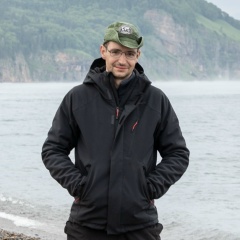http://scientificrussia.ru/news/v-rossii-sozdan-istochnik-moshchnogo-teragercovogo-izlucheniia
Вот например статья сегодняшняя на сайте, который называется СайентификРаша.
Заголовок вызывает гордость за страну и радость от обладания чем-то очень мощным и уникальным, которым будут стрелять прямо по раку и находить его сразу и везде.
Я молчу про словосочетание увеличить излучение, но, блин, ссылку на исследование в статью не вставить, чтобы читатель не тратил время на поиски? Фуфуфу, приличные издания так не делают.
В общем, так как сам немного занимаюсь этими самыми источниками "мощного" ТГц излучения и был в достаточно скверном настроении, чтобы поискать статью, я её нашел.
Короче, расходимся. Результат хороший — подняли эффективность генерации в одном из полупроводников в 10 тысяч раз. Это серьезно. Но в статье только относительные единицы, ни одного абсолютного значения, значит, абсолютными значениями хвастать пока рано. Это нормально, мы сами так делали и делаем. Прогресс реально очень крутой, но прогресс только в одной конкретной небольшой области. Думаю, из лазера на свободных электронах, который есть, например, в Новосибирске, можно получить мощность в тысячи, если не в миллионы раз превышающую нанопористый GaP, но сам лазер будет величиной с дом. Существует множество других технологий получения несравнимо больших мощностей ТГц излучения, поэтому нельзя в заголовке писать "мощного".
К оригинальной статье (в APL) претензий никаких - нормальная рабочая статья. И метод увеличения эффективности перспективный и интересный. Надеюсь, авторы сделают статью побольше, где будет и теория. А вот саентификраше негодование мое.
Судя по используемому лазеру, эксперимент делали всё-таки в Литве =)
Вот например статья сегодняшняя на сайте, который называется СайентификРаша.
Заголовок вызывает гордость за страну и радость от обладания чем-то очень мощным и уникальным, которым будут стрелять прямо по раку и находить его сразу и везде.
Я молчу про словосочетание увеличить излучение, но, блин, ссылку на исследование в статью не вставить, чтобы читатель не тратил время на поиски? Фуфуфу, приличные издания так не делают.
В общем, так как сам немного занимаюсь этими самыми источниками "мощного" ТГц излучения и был в достаточно скверном настроении, чтобы поискать статью, я её нашел.
Короче, расходимся. Результат хороший — подняли эффективность генерации в одном из полупроводников в 10 тысяч раз. Это серьезно. Но в статье только относительные единицы, ни одного абсолютного значения, значит, абсолютными значениями хвастать пока рано. Это нормально, мы сами так делали и делаем. Прогресс реально очень крутой, но прогресс только в одной конкретной небольшой области. Думаю, из лазера на свободных электронах, который есть, например, в Новосибирске, можно получить мощность в тысячи, если не в миллионы раз превышающую нанопористый GaP, но сам лазер будет величиной с дом. Существует множество других технологий получения несравнимо больших мощностей ТГц излучения, поэтому нельзя в заголовке писать "мощного".
К оригинальной статье (в APL) претензий никаких - нормальная рабочая статья. И метод увеличения эффективности перспективный и интересный. Надеюсь, авторы сделают статью побольше, где будет и теория. А вот саентификраше негодование мое.
Судя по используемому лазеру, эксперимент делали всё-таки в Литве =)
http://scientificrussia.ru/news/v-rossii-sozdan-istochnik-moshchnogo-teragercovogo-izlucheniia
Here, for example, today's article on a site called Scientific Rush.
The title evokes pride in the country and the joy of owning something very powerful and unique, which will be shot directly at the cancer and find it immediately and everywhere.
I am silent about the phrase to increase the radiation, but, damn, the link to the research should not be inserted into the article, so that the reader does not waste time searching? Fufu, decent editions don't do that.
In general, since I myself am a little engaged in these very sources of "powerful" THz radiation and was in a bad mood to search for an article, I found it.
In short, we diverge. The result is good - they increased the efficiency of generation in one of the semiconductors by 10 thousand times. This is serious. But in the article only relative units, not a single absolute value, it means that it’s too early to brag about absolute values. This is normal, we ourselves did and do. Progress is really very cool, but progress is only in one particular small area. I think that from a free-electron laser, which is, for example, in Novosibirsk, one can get a power of thousands, if not a million times greater than nanoporous GaP, but the laser itself will be as large as a house. There are many other technologies for obtaining incomparably high THz radiation powers, therefore it is impossible to write “powerful” in the title.
There are no complaints about the original article (in the APL) - a normal working article. And the method of increasing efficiency is promising and interesting. I hope the authors will make an article more, where there will be a theory. But self-indignation is mine.
Judging by the laser used, the experiment was done after all in Lithuania =)
Here, for example, today's article on a site called Scientific Rush.
The title evokes pride in the country and the joy of owning something very powerful and unique, which will be shot directly at the cancer and find it immediately and everywhere.
I am silent about the phrase to increase the radiation, but, damn, the link to the research should not be inserted into the article, so that the reader does not waste time searching? Fufu, decent editions don't do that.
In general, since I myself am a little engaged in these very sources of "powerful" THz radiation and was in a bad mood to search for an article, I found it.
In short, we diverge. The result is good - they increased the efficiency of generation in one of the semiconductors by 10 thousand times. This is serious. But in the article only relative units, not a single absolute value, it means that it’s too early to brag about absolute values. This is normal, we ourselves did and do. Progress is really very cool, but progress is only in one particular small area. I think that from a free-electron laser, which is, for example, in Novosibirsk, one can get a power of thousands, if not a million times greater than nanoporous GaP, but the laser itself will be as large as a house. There are many other technologies for obtaining incomparably high THz radiation powers, therefore it is impossible to write “powerful” in the title.
There are no complaints about the original article (in the APL) - a normal working article. And the method of increasing efficiency is promising and interesting. I hope the authors will make an article more, where there will be a theory. But self-indignation is mine.
Judging by the laser used, the experiment was done after all in Lithuania =)
У записи 6 лайков,
0 репостов.
0 репостов.
Эту запись оставил(а) на своей стене Андрей Городецкий



























